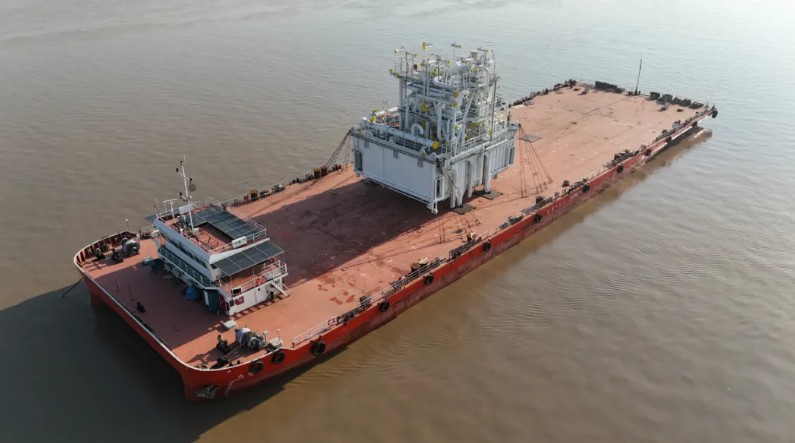This story requires a subscription
This includes a single user license.
CIMC SOE announced the delivery of the module in a statement on Thursday.
The 17m*15m*17m module weighs 421 t, and is equipped with two LNG booster pumps, one BOG re-condenser, two LNG vaporizers, and other key equipment, according to CIMC SOE.
In November 2023, Norway-based Wartsila Gas Solutions, a unit of Finland’s Warstila, awarded the module contract to CIMC SOE, a unit of CIMC Enric.
Earlier the same year, Wartsila Gas Solutions won the contract worth about 22.9 million euros ($25 million) to supply the regasification module for the FSRU that serves LNG Croatia’s Krk LNG import facility.
The new module will supplement the vessel’s existing onboard Wartsila regasification system and increase the FSRU terminal’s capacity with 212 mmscfd (million standard cubic feet per day) or 250,000 cbm per hour.
The current three LNG regasification units have a maximum regasification rate of 451,840 cbm per hour.
Following the upgrade, the Krk LNG facility will have a capacity of about 6.1 bcm per year.
Wartsila Gas Solutions said at the time the module will be installed during summer 2025.

Expansion
State-owned LNG Croatia recently awarded a contract to Türkiye’s Kuzey Star Shipyard for the module.
The contract awarded to Kuzey Star is worth about 14.6 million euros ($15 million) and the scope of services includes installation, implementation, and commissioning of the new module and equipment on the FSRU.
Croatia just completed the Zlobin-Bosiljevo gas pipeline as part of the capacity expansion project of the FSRU-based LNG import facility on the island of Krk.
Due to high demand, the Croatian government decided in 2022 to boost the capacity of the FSRU-based Krk LNG terminal.
LNG Croatia is owned by Croatian state-owned power utility HEP and Plinacro with 85 percent and 15 percent, respectively.
Hungary’s MFGK and a unit of Switzerland-based trading firm MET are some of the users of the facility.

